Teaching students when to use c vs. when to use k is quite a challenge. And then – as soon as they start to get the hang of it – you have to teach them about the final /k/ sound!
Just think about the words “snack,” “leak” and “lake.” They all end with different spelling patterns, but /k/ is the last sound in each word. There are multiple ways to spell a word that ends with /k/! 😱
In this post, I’ll explain the different ways to spell the /k/ sound at the end of a word. I’ll also share how I teach the final /k/ sound, when I teach it, and provide a few activity ideas for teaching it to second graders!
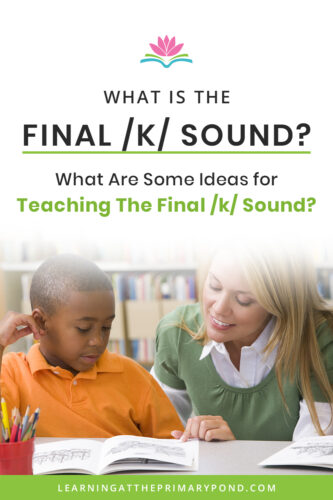
What Is The Final K Sound?
In Kindergarten and first grade, students learn that /k/ can come from the letter “k” or the letter “c”. And now, we’re throwing another curveball in there!
The final /k/ sound can be spelled in three different ways:
- /k/ at the end of a word can be spelled -CK
- /k/ at the end of a word can be spelled -K
- /k/ at the end of a word can be spelled -KE
Here are a few examples of words for each of the above:
- ending in -ck: back, stack, quick, dock, tuck
- ending in -k: soak, whisk, sneak, stink, week
- ending in -ke: spoke, shake, hike, joke, snake
How Do You Teach Final K Words?
It’s important to teach students that a single sound (like /k/) can be spelled in many ways! /K/ is a phoneme that can be spelled with multiple graphemes.
Fortunately, a few rules will help with this final /k/ concept:
- If the /k/ sound comes right after a short vowel –> use -CK
- If the /k/ sound comes right after a vowel team or consonant –> use -K
- If neither option above applies and if the /k/ sound comes right after a long vowel sound –> use -KE
As with most phonics rules, there are almost always exceptions! Most exceptions fall in multisyllabic words that actually end in -c: magic, frantic, fantastic.
To have students choose the correct spelling, have them say all the sounds in the word. Then have them think through which ending would make the most sense based on the sounds.
For instance, if the word was “back,” I’d start by asking students “What sounds do you hear in back?” Once we determine it’s /b//ă//k/, my next question is: “What comes right BEFORE the /k/ sound?” The ideal answer to this question is “A short vowel /ă/.”
Referring back to our rules, we can now see that “back” is spelled with -CK, because the /k/ sound comes after a short vowel.

When Do I Teach The Final K Sound?
In my phonics program, From Sounds to Spelling, I teach this final /k/ sound in 2nd grade. It’s important that you’ve already taught the following concepts first:
- Short vowels
- Ending blends (like -lk, -nk)
- Long vowels spelled with silent e
- Vowel teams
Students don’t necessarily master final /k/ immediately. It takes some time (and repetition)!
What Are Some Activities For Teaching The Final K Sound?
Here’s a lesson idea to introduce final /k/ and get kids moving!
First, I hand out a final /k/ sound word to each student. I then give the directions as follows: “Your challenge today is to organize yourselves into 3 groups. You’re going to need to look at how the /k/ sound is spelled in your words. Look at your word, and read it quietly to yourself. Now start talking to other people to see how you’re going to organize yourselves.”
It’s so enjoyable to sit back and have the students lead this activity! I love listening in on the conversations and gaining some insight into how their brains are thinking. It’s also great for team-building.
Once students have grouped themselves, I ask “How did you come up with your groups?” As a class, we’re able to explain how some cards had -ck, others with -k, and others with -ke. Then I can follow up with more direct instruction and teaching the “rules” of final /k/.
Here are a few other activities you can use in your classroom for the final /k/ sound words:
- Multi-sensory writing- try gel bags or sand on a paper plate!
- Making words with final /k/ using magnetic letters – this can be a dictation activity or an open-ended activity
- Words sort with 3 columns → “/k/ as -CK,” “/k/ as -K,” and “/k/ as -KE”
- Decodable texts – circle, underline, or highlight words with the final /k/ sound BEFORE reading a decodable text. (This post explains what decodable books are and why they are helpful!)
Conclusion
As with all phonemes that can be represented by multiple graphemes, the sound of /k/ can be confusing for students. Having these guidelines for students (perhaps posted in the classroom) will help a ton! So will that crucial question to have students ask themselves: “What comes right BEFORE the /k/ sound?“
I hope that this information about the final /k/ sound was helpful! If you’re in need of more resources to teach words that end in the /k/ sound and other phonics skills, check out my phonics program From Sounds to Spelling.
Happy teaching!
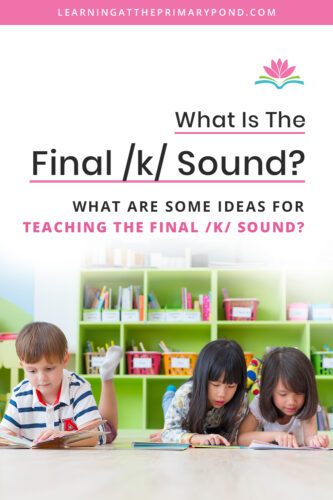


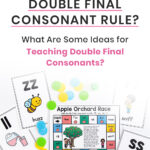

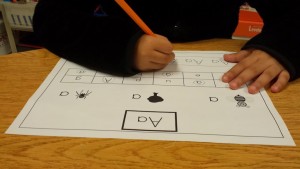
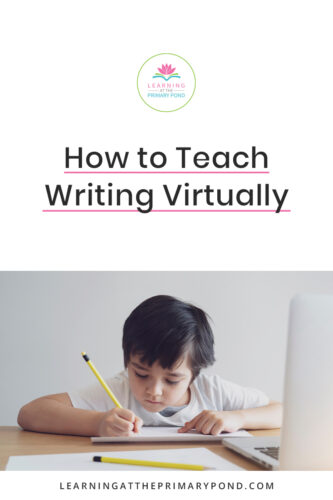
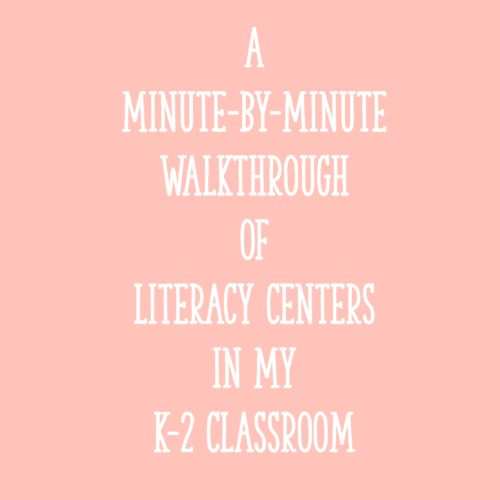






I love the idea of finding their groups!
Yes!!
This rule about the /k/sound, when to use -ck, when to use -k and when to use -ke was mind blowing for me! I love that I can teach this to my class, but they don’t have to memorize a specific rule, as long as they think of a word they know has that ending, they can infer the rule from that known word.
Totally – yes, so nice when there’s an actual “rule” vs. just memorizing!
So many of my students are often unsure of what /k/ ending to use when writing. Sharing and practicing these “rules” with them will be incredibly helpful! I love the “grouping” activity and can’t wait to try it.
Awesome to hear!